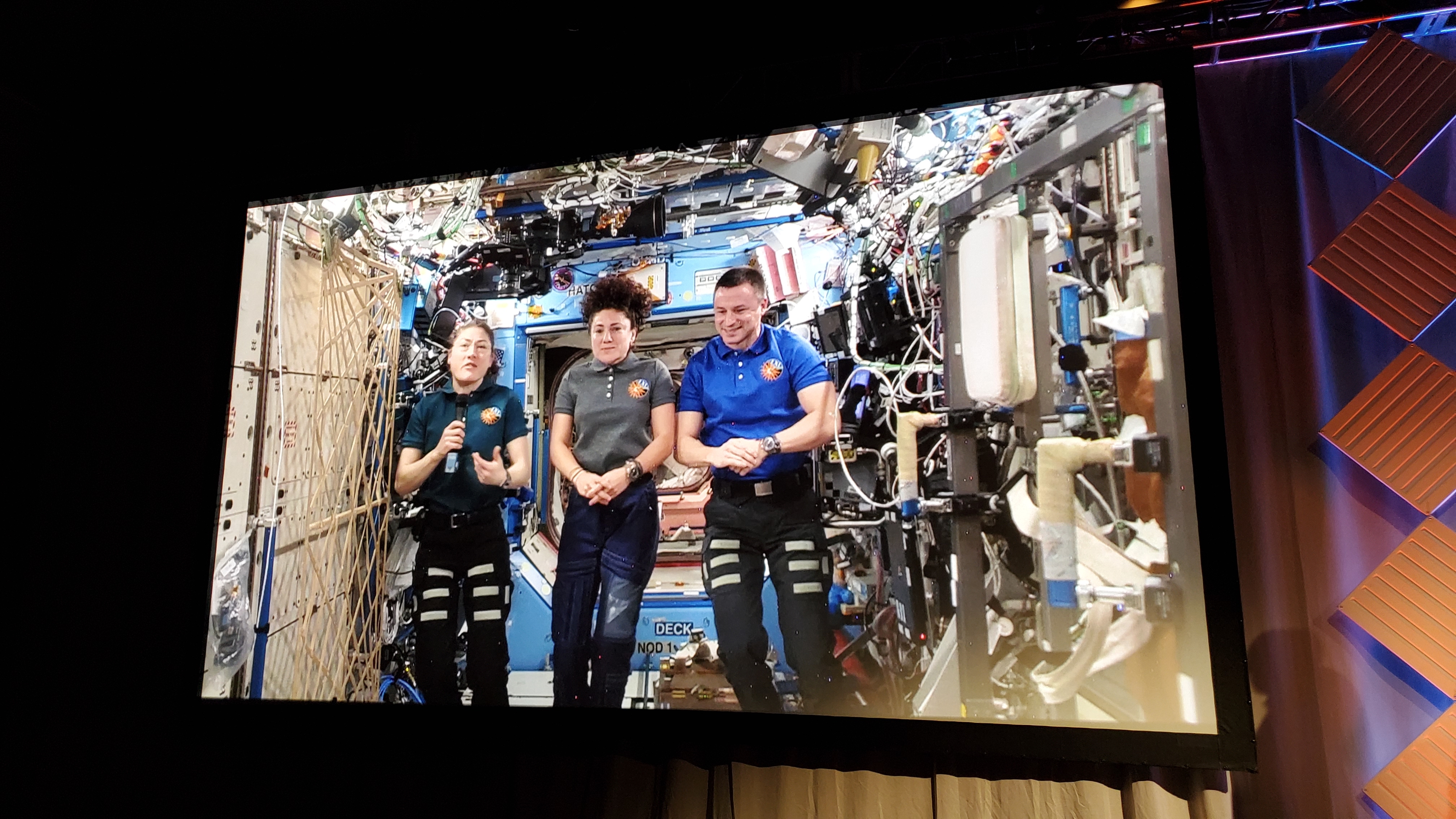SMPTE 2019: NASA Tests Cloud Alternative to Satellite Long-Haul Distribution
LOS ANGELES—The National Aeronautics and Space Administration (NASA), working with Amazon Web Services (AWS Elemental), tested a cloud-based streaming alternative to long-haul satellite distribution of video originating on the International Space Station at the 2019 Annual SMPTE Technical Conference and Exhibition.

Astronauts Christina Koch and Jessica Meir aboard the space station were interviewed via the link for attendees of the SMPTE conference, which is dedicating Thursday to space and imaging to mark the 50th anniversary of Apollo 11 astronauts Neil Armstrong and Buzz Aldrin landing on the moon.
The test aims to prove the viability of one day replacing the long-haul satellite link NASA uses to transport coverage from the Johnson Space Center in Houston of crew interviews, press conferences, launches and other events to the media, as well as to feed 24/7 365-coverage to NASA Television, says Rodney Grubbs, Imagery Experts program manager at the Marshall Space Flight Center in Huntsville, Ala.
NASA is considering replacing its round-the-clock coverage on NASA Television with a model that’s akin to the Olympics or ESPN coverage that presents live content when an event is actually happening via over-the-top distribution and web or phone apps, he says.
“Until very recently, it was very difficult to replace satellite for interactive content,” says Grubbs. “If we were relying strictly on the wild internet, the latency was just too great to make that viable,” he says.
Reliability is also an important concern, particularly since the space agency wants to make sure media outlets receive its feeds for their coverage of space developments, adds Grubbs.
For the SMPTE test, AWS Elemental Media Services is being used to transport content, produce it for the live event and ultimately deliver it through its cloud services, says Josh Winstead, technical marketing engineer at AWS Elemental.
“With the workflow we’ve put in place, MediaConnect [AWS Elemental’s live video transport service] allows us to replace what satellite transmission is usually used for,” says Winstead.
That workflow involves taking the content from the ISS that is downloaded at the Johnson Space Center, encoding it with an AWS Elemental live encoder and transporting it to MediaConnect, which is being used as the long-haul alternative to transport the content to SMPTE in Los Angeles, he says.
A backup path using the same steps is also being sent through NASA vendor Encompass, adds Winstead.
In Los Angeles, the signal is decoded and input into AWS Elemental production services for video switching, audio mixing and all of the other production tasks that are necessary. That content is then being output and re-encoded, sent to AWS Elemental’s MediaLive video processing service where an adaptive bit rate (ABR) stack is being created, sent to the AWS Elemental MediaPackage origin server and sent out to the CloudFront CDN for viewers of the livestream, says Winstead.
NASA is looking for ways to cut costs and complexity as it readies its Artemis project to return to the moon in 2024. Shifting most of its traditional video workflow and transport to the cloud could save expense, says Grubbs.
A few years earlier, Grubbs first saw the potential of transitioning away from long-haul satellite distribution to the cloud model at an AWS event. “What caught my attention with this was the demonstration that AWS showed me at AWS re:Invent in 2017, where they had the NFL side-by-side with digital satellite and an earlier version of this technology. I couldn’t tell a difference in the quality and AWS was ahead [of the satellite source],” says Grubbs.
At the SMPTE Conference, Grubbs and co-presenter Dylan Mathis, communications lead with the ISS at Johnson Space Center in Houston, are also discussing the challenges of sharing imagery from space and the need for solutions to help protect sensors and other electronic components from damaging radiation during space flight.
The interview from the ISS is being produced in 720p HD. In 2017, AWS Elemental worked with NASA on the first Ultra-HD video coverage from space.
The event is being broadcast on NASA TV and streamed live online.
Get the TV Tech Newsletter
The professional video industry's #1 source for news, trends and product and tech information. Sign up below.
Phil Kurz is a contributing editor to TV Tech. He has written about TV and video technology for more than 30 years and served as editor of three leading industry magazines. He earned a Bachelor of Journalism and a Master’s Degree in Journalism from the University of Missouri-Columbia School of Journalism.

